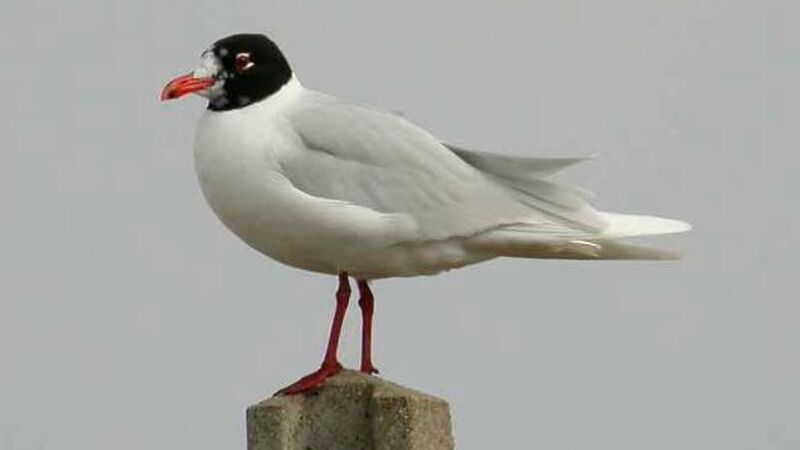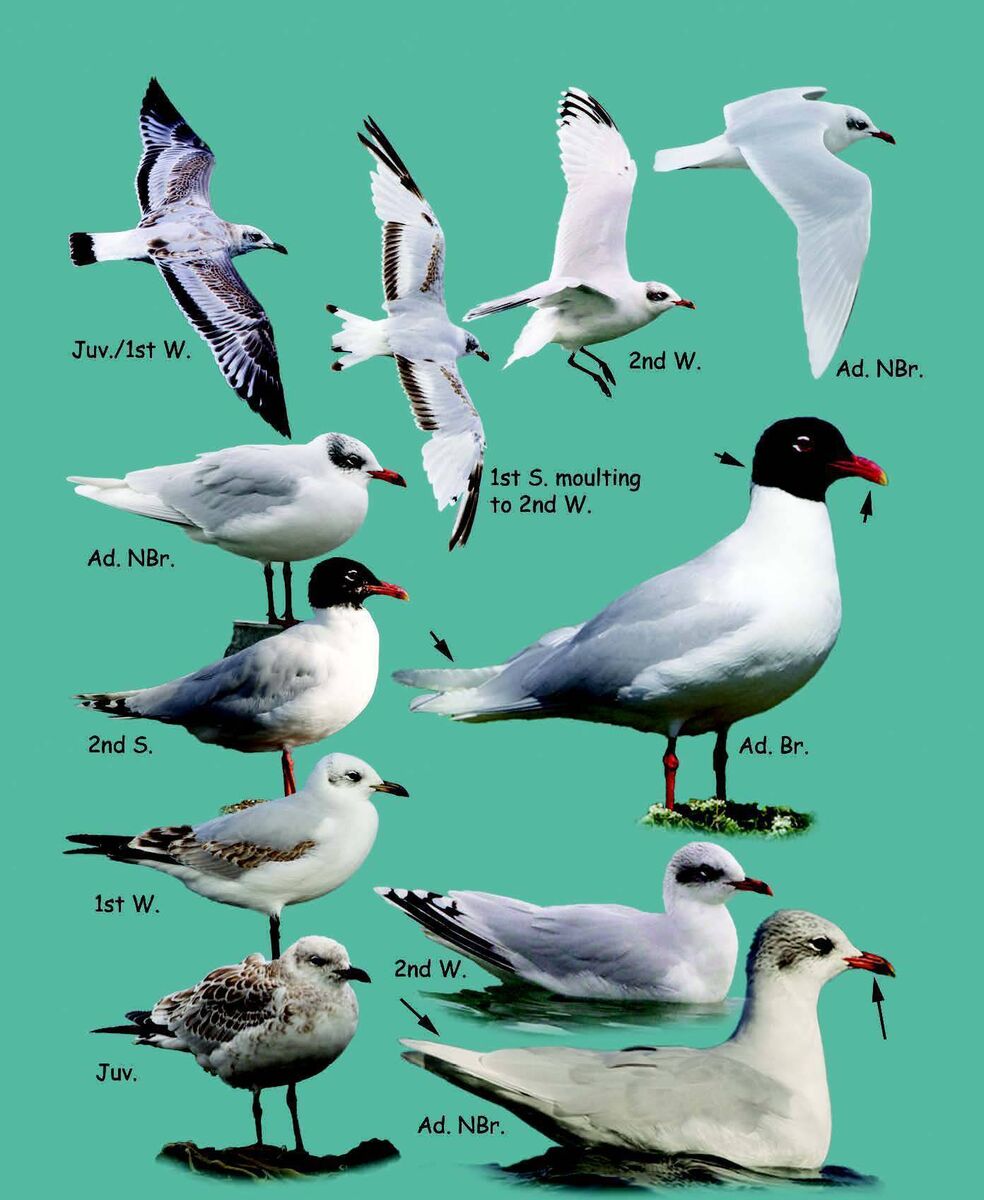Birds of Ireland: Mediterranean gull

Adult Mediterranean gull. Picture: John Furse
Mediterranean Gull [Sléibhín Meánmhuirí | Larus melanocephalus]
The Mediterranean gull is about 37-39 centimetres long with a wingspan of 94-98cm. They are a rare breeding species found on estuaries here all year round. The adults in breeding plumage have a jet-black hood with a broken white eye ring and they have a pale grey back and wings which are white towards the tips. They don't have any black body plumage and they have a stout red beak with a yellow tip; and long red legs.
A Mediterranean gull's adult non-breeding plumage features variable dark streaks from behind their eyes across the top of their head. Juvenile and immature Mediterranean gulls have more black/grey than young black-headed gulls. In their first winter plumage they have dark legs and beak and a thin black tail band. In their second year they look more like an adult and have thin black markings on their white primaries.

In flight an adult Mediterranean gull looks to have no black on its wings. You can see think black lines on the primaries of birds in their second year. A bird in its first winter plumage looks black, white, and grey in flight.
Because birds can fly and do not recognise political boundaries they are the best example to show the need for a global approach to wildlife conservation. Ireland plays host to hundreds of thousands of birds which spend part of their year in another country, often very far away and necessitating a flight that will take them across many countries.
For example, the swallow, which comes to Ireland each summer to raise its young, undertakes a hazardous journey to reach here. Apart from having to survive the winter months south of the Sahara, it will, when it starts its migration in spring, first have to endure the harsh conditions over the Sahara Desert. If it succeeds, it will face sea crossings and illegal hunting over the Mediterranean before eventually returning to Ireland. Similarly, geese that are protected in Ireland are shot in other countries on their way south to winter here each year.
If we want birds such as the swallow to return to us each summer, it is vital that international cooperation between governments is encouraged.

- Featured in by Jim Wilson with photographs by Mark Carmody Jim Wilson is a wildlife writer, broadcaster, tour leader, and former chairman of BirdWatch Ireland. He has been involved in the study and conservation of birds in Ireland for more than 45 years, contributing to several major surveys and international projects.
Mark Carmody is an award-winning wildlife photographer, has a PhD in biochemistry and works as a European patent attorney.







